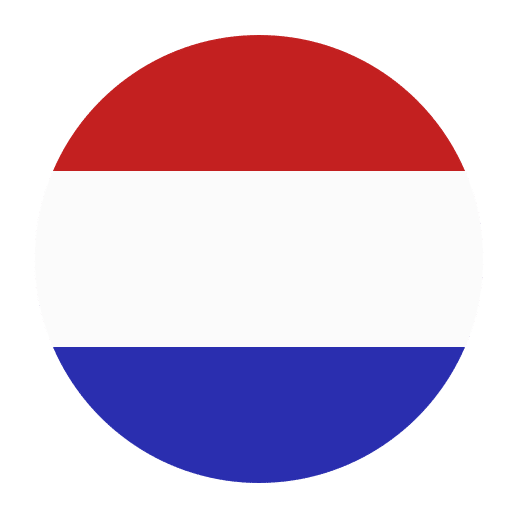Learning a new language can be both an exciting and daunting journey. Dutch, with its unique sounds and vocabulary, can seem particularly challenging for English speakers. However, one effective strategy to overcome these challenges is using mnemonics. Mnemonics are memory aids that help you remember information more easily. By associating new Dutch words with familiar images, phrases, or concepts, you can significantly speed up your learning process. In this article, we’ll explore how to build a strong Dutch vocabulary using mnemonics, providing practical examples and tips to make your language learning journey more enjoyable and effective.
What are Mnemonics?
Mnemonics are tools or techniques that aid memory. They can take various forms, such as:
– **Acronyms**: Forming a word from the first letters of a series of words.
– **Visual Imagery**: Associating a word with a vivid mental image.
– **Rhymes and Songs**: Using rhythm and melody to make information more memorable.
– **Chunking**: Breaking down information into smaller, manageable units.
When learning a new language, visual imagery and associations are particularly useful. By creating a mental image or story that links the new word to something you already know, you can make it easier to recall.
Why Use Mnemonics for Learning Dutch?
Dutch vocabulary can be tricky for English speakers, not only due to different spellings and pronunciations but also because of subtle differences in meaning and usage. Mnemonics can bridge this gap by providing a mental shortcut. Here are a few reasons why mnemonics are especially useful for learning Dutch:
1. **Retention**: Mnemonics help you retain information longer. The vivid mental images and associations make it easier to remember new words.
2. **Speed**: You can learn new words faster because mnemonics simplify the memorization process.
3. **Recall**: Mnemonics improve your ability to recall words when you need them, which is crucial for speaking and writing.
4. **Engagement**: Creating mnemonics can be fun and engaging, making the learning process more enjoyable.
How to Create Effective Mnemonics for Dutch Vocabulary
Creating effective mnemonics involves a few key steps. Let’s break them down:
1. Understand the Word
Before you create a mnemonic, make sure you understand the word’s meaning, pronunciation, and usage. For example, the Dutch word for “house” is “huis.” It’s important to know how to pronounce it correctly and in what context it is used.
2. Find a Similar-Sounding English Word
Look for an English word or phrase that sounds similar to the Dutch word. For “huis,” you might think of the English word “house,” which is quite similar in sound.
3. Create a Vivid Mental Image
Create a vivid mental image that links the Dutch word with the similar-sounding English word. For “huis,” you might imagine a house with a huge letter “H” on the front door. The more bizarre and vivid the image, the better.
4. Use the Image in a Sentence
Use the mental image in a sentence to reinforce the connection. For example, “When I see a house with a huge letter ‘H’ on the door, I remember that ‘huis’ means house in Dutch.”
5. Practice and Review
Regularly review your mnemonics to reinforce your memory. Practice using the new words in sentences and conversations to solidify your understanding and recall.
Examples of Mnemonics for Dutch Vocabulary
To give you a head start, here are some examples of mnemonics for common Dutch words:
1. Dier (Animal)
– **Similar-Sounding English Word**: Deer
– **Mnemonic**: Imagine a deer with a sign saying “Animal” around its neck.
– **Sentence**: When I see a deer with a sign, I remember that “dier” means animal in Dutch.
2. Boom (Tree)
– **Similar-Sounding English Word**: Boom (sound)
– **Mnemonic**: Imagine a tree making a loud “boom” sound as it grows.
– **Sentence**: When I hear a tree go “boom,” I remember that “boom” means tree in Dutch.
3. Eten (To Eat)
– **Similar-Sounding English Word**: Eating
– **Mnemonic**: Imagine someone eating with a giant fork that has “eten” written on it.
– **Sentence**: When I see someone eating with a giant fork, I remember that “eten” means to eat in Dutch.
4. Kat (Cat)
– **Similar-Sounding English Word**: Cat
– **Mnemonic**: Imagine a cat wearing a hat with the word “kat” on it.
– **Sentence**: When I see a cat with a hat, I remember that “kat” means cat in Dutch.
5. Water (Water)
– **Similar-Sounding English Word**: Water
– **Mnemonic**: Imagine a bottle of water with “water” written in large letters on it.
– **Sentence**: When I see a bottle of water, I remember that “water” means water in Dutch.
Advanced Mnemonic Techniques
Once you’ve mastered basic mnemonics, you can explore more advanced techniques to expand your Dutch vocabulary even further.
1. The Loci Method
The Loci method involves associating words with specific locations. For example, you could imagine different rooms in your house and place new Dutch words in each room. As you mentally walk through your house, you recall the words associated with each room.
2. The Story Method
Create a story that includes multiple Dutch words you want to remember. The story should be vivid and engaging, making it easier to recall the words. For example, you might create a story about a “kat” (cat) who goes to a “huis” (house) to “eten” (eat) some “water” (water) and meets a “dier” (animal) along the way.
3. The Peg System
The Peg system involves associating words with a pre-memorized list of “pegs.” Each peg is a number or word that you already know well. For example, you might use numbers 1 to 10 and associate each number with a Dutch word. When you need to recall the word, you think of the peg and the associated word.
Tips for Using Mnemonics Effectively
Here are some additional tips to help you use mnemonics effectively in your Dutch language learning journey:
1. Be Consistent
Consistency is key to effective language learning. Set aside regular time each day to review your mnemonics and practice using new words in sentences.
2. Make it Personal
The more personal and meaningful the mnemonic, the better it will work. Use images, stories, and associations that resonate with you personally.
3. Keep it Simple
While vivid and bizarre images can be helpful, don’t overcomplicate your mnemonics. Keep them simple and easy to remember.
4. Use Multiple Senses
Engage multiple senses when creating mnemonics. Visualize the image, say the word out loud, and even write it down to reinforce your memory.
5. Practice in Context
Practice using new words in context. Create sentences, engage in conversations, and immerse yourself in the language to reinforce your memory and understanding.
Conclusion
Building a strong Dutch vocabulary doesn’t have to be a daunting task. By using mnemonics, you can make the learning process more enjoyable, efficient, and effective. Remember to understand the word, find a similar-sounding English word, create a vivid mental image, use the image in a sentence, and practice regularly. With these techniques and tips, you’ll be well on your way to mastering Dutch vocabulary and enjoying the rich and vibrant Dutch language. Happy learning!

